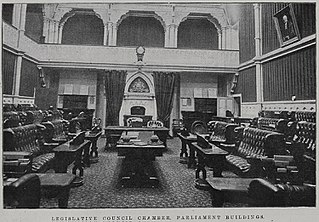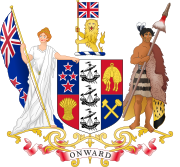
The Constitution of Canada is the supreme law in Canada. It outlines Canada's system of government and the civil and human rights of those who are citizens of Canada and non-citizens in Canada. Its contents are an amalgamation of various codified acts, treaties between the Crown and Indigenous Peoples, uncodified traditions and conventions. Canada is one of the oldest constitutional monarchies in the world.

The Statute of Westminster 1931 is an act of the Parliament of the United Kingdom that sets the basis for the relationship between the Dominions and the Crown.

The Canada Act 1982 is an act of the Parliament of the United Kingdom and one of the enactments which make up the Constitution of Canada. It was enacted at the request of the Senate and House of Commons of Canada to patriate Canada's constitution, ending the power of the British Parliament to amend the constitution. The act also formally ended the "request and consent" provisions of the Statute of Westminster 1931 in relation to Canada, whereby the British parliament had a general power to pass laws extending to Canada at its own request.
The Constitution Act, 1982 is a part of the Constitution of Canada. The Act was introduced as part of Canada's process of patriating the constitution, introducing several amendments to the British North America Act, 1867, including re-naming it the Constitution Act, 1867. In addition to patriating the Constitution, the Constitution Act, 1982 enacted the Canadian Charter of Rights and Freedoms; guaranteed rights of the Aboriginal peoples of Canada; entrenched provincial jurisdiction over natural resources; provided for future constitutional conferences; and set out the procedures for amending the Constitution in the future.

The Australia Act 1986 is the short title of each of a pair of separate but related pieces of legislation: one an act of the Parliament of Australia, the other an act of the Parliament of the United Kingdom. In Australia they are referred to, respectively, as the Australia Act 1986 (Cth) and the Australia Act 1986 (UK). These nearly identical Acts were passed by the two parliaments, because of uncertainty as to whether the Commonwealth Parliament alone had the ultimate authority to do so. They were enacted using legislative powers conferred by enabling Acts passed by the parliaments of every Australian state. The Acts came into effect simultaneously, on 3 March 1986.

The Dominion of New Zealand was the historical successor to the Colony of New Zealand. It was a constitutional monarchy with a high level of self-government within the British Empire.
Patriation is the political process that led to full Canadian sovereignty, culminating with the Constitution Act, 1982. The process was necessary because, at the time, under the Statute of Westminster, 1931, and with Canada's agreement, the British Parliament retained the power to amend Canada's British North America Acts and to enact, more generally, for Canada at the request and with the consent of the Dominion. That authority was removed from the UK by the enactment of the Canada Act, 1982, on March 29, 1982, by the Parliament of the United Kingdom, as requested by the Parliament of Canada.

The New Zealand Legislative Council was the upper house of the General Assembly of New Zealand between 1853 and 1951. An earlier arrangement of legislative councils for the colony and provinces existed from 1841 when New Zealand became a colony; it was reconstituted as the upper house of a bicameral legislature when New Zealand became self-governing in 1852, which came into effect in the following year.

The Colonial Laws Validity Act 1865 is an Act of the Parliament of the United Kingdom. Its long title is "An Act to remove Doubts as to the Validity of Colonial Laws".
In certain jurisdictions, including the United Kingdom and other Westminster-influenced jurisdictions, as well as the United States and the Philippines, primary legislation has both a short title and a long title.

The Statute of Westminster Adoption Act 1942 is an act of the Australian Parliament that formally adopted sections 2–6 of the Statute of Westminster 1931, an Act of the Parliament of the United Kingdom enabling the total legislative independence of the various self-governing Dominions of the British Empire. With its enactment, Westminster relinquished nearly all of its authority to legislate for the Dominions, effectively making them de jure sovereign nations.
Before 1982, modifying the Constitution of Canada primarily meant amending the British North America Act, 1867. Unlike most other constitutions, however, the Act had no amending formula; instead, changes were enacted through Acts of the Parliament of the United Kingdom called the British North America Acts.

The Statute of Westminster Adoption Act 1947 was a constitutional Act of the New Zealand Parliament that formally accepted the full external autonomy offered by the British Parliament. By passing the Act on 25 November 1947, New Zealand adopted the Statute of Westminster 1931, an Act of the British Parliament which granted full sovereign status and Commonwealth membership to the Dominions ratifying the statute. New Zealand was the last Dominion to do so, as the Dominion of Newfoundland voted to become a part of Canada in 1948.

The constitution of New Zealand is the sum of laws and principles that determine the political governance of New Zealand. Unlike many other nations, New Zealand has no single constitutional document. It is an uncodified constitution, sometimes referred to as an "unwritten constitution", although the New Zealand constitution is in fact an amalgamation of written and unwritten sources. The Constitution Act 1986 has a central role, alongside a collection of other statutes, orders in Council, letters patent, decisions of the courts, principles of the Treaty of Waitangi, and unwritten traditions and conventions. There is no technical difference between ordinary statutes and law considered "constitutional law"; no law is accorded higher status. In most cases the New Zealand Parliament can perform "constitutional reform" simply by passing acts of Parliament, and thus has the power to change or abolish elements of the constitution. There are some exceptions to this though – the Electoral Act 1993 requires certain provisions can only be amended following a referendum.

The New Zealand Constitution Act 1852 was an Act of the Parliament of the United Kingdom that granted self-government to the Colony of New Zealand. It was the second such Act, the previous 1846 Act not having been fully implemented. The purpose of the Act was to have constitutional independence from Britain. The definition of franchise or the ability to vote excluded all women, most Māori, all non-British people and those with convictions for serious offences.

The Succession to the Throne Act, 1937 is a 1937 act of the Canadian parliament that ratified the Canadian cabinet's consent to His Majesty's Declaration of Abdication Act 1936, an act of the United Kingdom parliament that allowed the abdication of Edward VIII. This ratification was of symbolic value only, because, under the Statute of Westminster 1931, the UK act was already part of Canadian law by virtue of the Canadian cabinet's prior request and consent.
The Perth Agreement was made in Australia in 2011 by the prime ministers of what were then the sixteen states known as Commonwealth realms, all recognising Elizabeth II as their head of state. The document agreed that the governments of the realms would amend their laws concerning the succession to their shared throne and related matters. The changes, in summary, comprised:
The "suicide squad" was the group of New Zealand Legislative Councillors appointed in 1950 by Prime Minister Sidney Holland tasked with voting the New Zealand Legislative Council out of existence. The Legislative Council was a body appointed by the Prime Minister since the colonial days, and by the 1940s it was seen as ineffectual and obsolete. However, its abolition would involve a complex constitutional process, so Holland appointed new councillors with the task to draft the laws that would eventually dissolve the body, hence the nickname. On 1 December 1950, the Legislative Council met for the last time, and by a majority of ten voted itself out of existence; the Council was formally abolished on 1 January 1951.

The Succession to the Throne Act, 2013, gave Canada's assent to the United Kingdom's 2013 changes to the rules of succession to the British throne. It was passed by the Parliament of Canada as Bill C-53, and received royal assent on 27 March 2013. The act was brought into force by the Governor-General-in-Council on 26 March 2015.

The Constitution Act 1986 is an Act of the New Zealand Parliament that forms a major part of the constitution of New Zealand. It lays down the framework defining fundamental political principles of governance, and establishes the powers of the executive, legislative and judicial branches of state. It outlines the roles and duties of the monarch, the governor-general, ministers and judges. The Act repealed and replaced the New Zealand Constitution Act 1852 and the Statute of Westminster, and removed the ability of the British Parliament to pass laws for New Zealand with the consent of the New Zealand Parliament.










